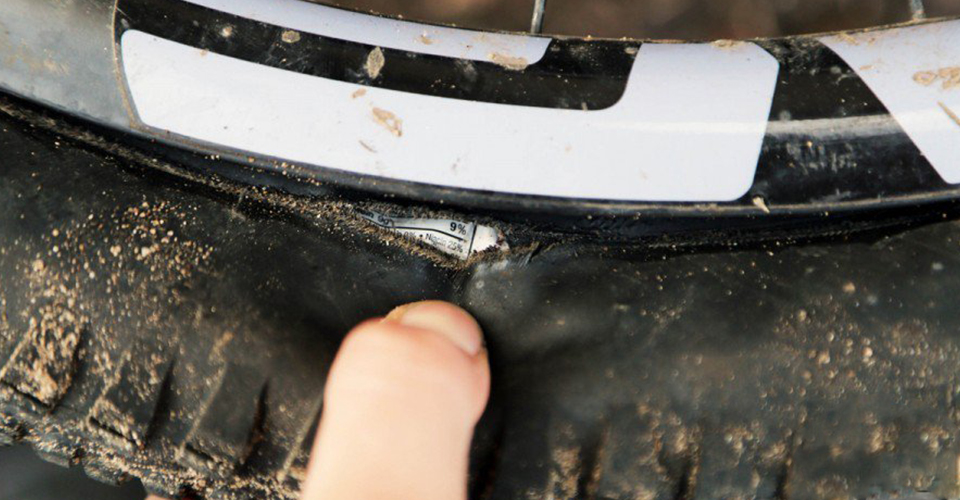Being able to fix a slashed tire can be amazing, but regular maintenance is crucial as well. Apart from the guide below, make sure that you are taking the following steps:
Taking all of the precautions will help in extending the tire’s life and reduce the probability of having a flat tire. Proper care will avoid any mishappening.
Some supplies usually come with the vehicle itself:
In case you have misplaced it, or your vehicle didn’t come with any of the above mentioned, it’s recommended that you get new ones today. Also, the spare tire should be fully inflated and as per the recommended PSI.
Here are some other items that might not be coming with the vehicle that you own, but you should be storing them in the box if you end up having a slashed tire:
Step 1: Search for a Safe Site:
As soon as you see, that you have a slashed tire, don’t make an abrupt turn or put brake. Slowly lower down the speed and observe the surrounding for a straight, leveled road stretch that has a wider shoulder. An ideal place will be an empty parking lot.
The level ground will also be perfect as it’s going to prevent the car from rolling. Also, a straight road stretch is better than curved as the coming traffic can likely see you.
Never try to fix the slashed tire on narrow roads with oncoming traffic.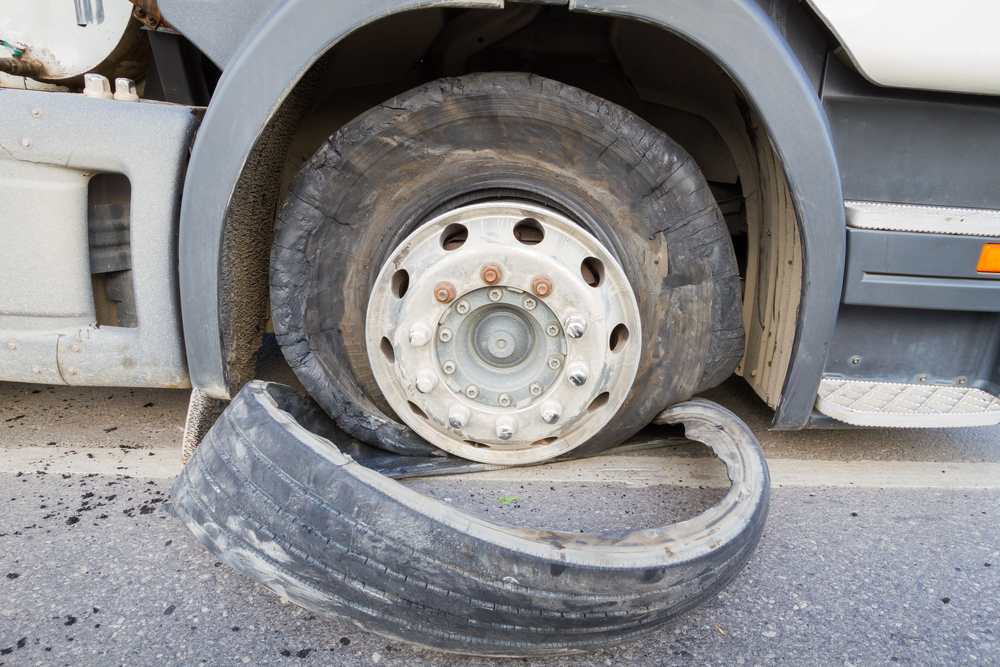 Slowly move towards the safe spot. While driving with a slashed tire can ruin the rim, a rim replacement is better than getting hit by an inattentive driver!
Slowly move towards the safe spot. While driving with a slashed tire can ruin the rim, a rim replacement is better than getting hit by an inattentive driver!
Step 2: Turn the Hazard Lights On and Put Parking Brake:
The hazard lights also called “Flashers” are going to help other vehicle drivers to see you. Also for avoiding any kind of accident, make sure that you are turning it on as soon as you can when you realize that there is a need for pulling over.
Once you stop, before you go ahead with fixing a slashed tire, use the parking brake to avoid vehicle rolling.
Step 3: Use Tire Sealants:
Tire sealants are chemicals that are used to block any small slashes once it gets detected. Understand that these are quick fixes and not permanent solutions. It will be massively helpful in case of emergencies but can be used on small slashes only. Tire sealants are easy to use and inexpensive. The only negative of using tire sealant is that it may damage the monitoring system of the tire. This can later make replacement tricky as it can cling to the wheel.
This can later make replacement tricky as it can cling to the wheel.
Key Note:
Keep in mind that making use of less sealant than the recommended amount will reduce the efficacy because the tire won’t have enough tire sealant that can stop the puncture.
This can be an alternative and a better option over sealants. Keep in mind that this will be a temporary fix.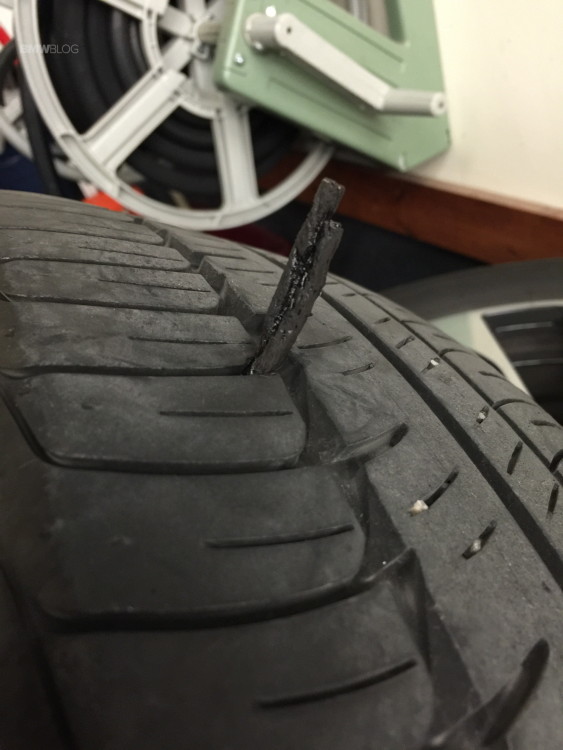 You can push a plug inside the tire. This will be a good method in case there isn’t any internal damage.
You can push a plug inside the tire. This will be a good method in case there isn’t any internal damage.
If you find that there is some kind of internal damage, don’t even try this method.
Step 1: Removing the tire:
With the help of a tool kit in your car, remove the tire from the car. Make sure that this is done safely.
Step 2: Search for the Slash:
Sometimes the slash is easily visible, otherwise, you need to inflate it for finding the accurate area. Inflating the tire will assist you to see the leak spot!
Step 3: Hear it!
You should be able to see the slash area physically, or you need to listen to the hissing sound. When there is some kind of pressure over the tire, one can easily hear the sound from the precise place of leakage.
Step 4: Make use of a Plug:
After you have identified the slash area, make use of a block or plug on the vent. The plugging tool is present in the tool kit of the car.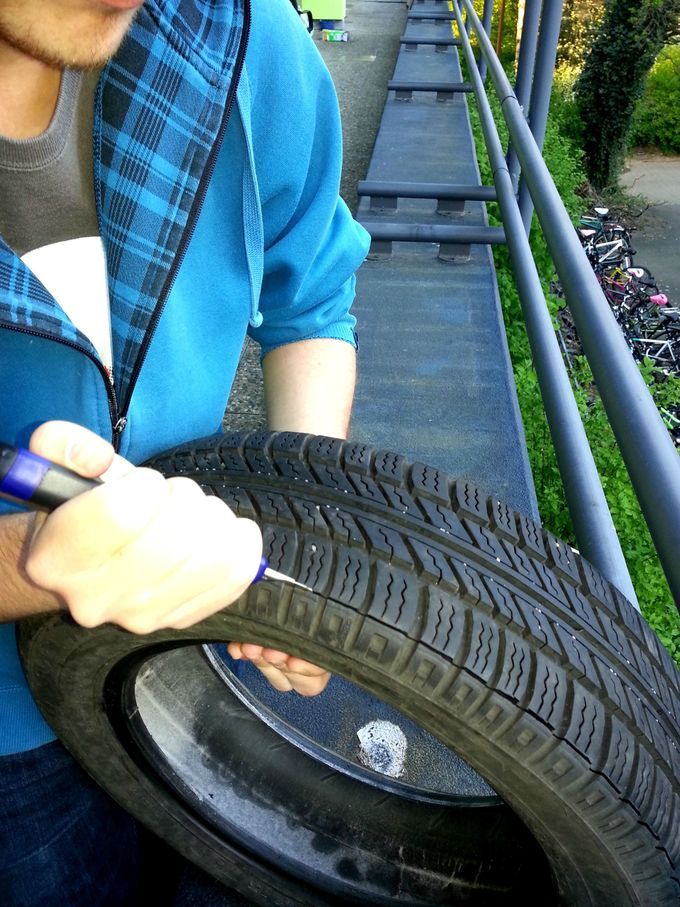 Remember to push the plug inside enough and only a bit sticks out.
Remember to push the plug inside enough and only a bit sticks out.
Step 5: Fill the slashed tire:
Now you can fill the air with the right pressure and place it back on the vehicle.
Key Note:
This method is helpful just for some time and you are still recommended to replace or use a spare tire when you can!
If the tire slash is big, it can’t be repaired. Therefore in a situation like this, make sure to take it to your nearest tire shop. You can get a new tire in case there is no possibility of a patchwork
Also, all the methods mentioned are for emergencies only and should be attempted only when there isn’t any professional help available. Slashed tires often need to be replaced and cannot be repaired.
The cost of fixing slashed tires can vary anywhere between 10 and 20 dollars and would require getting the tire patched. Some dealers will be able to repair the tire slash for a very small cost if the slash isn’t huge or if you had purchased it from them.
Some dealers will be able to repair the tire slash for a very small cost if the slash isn’t huge or if you had purchased it from them.
As soon as you observe the tire is slashed follow these steps:
You should immediately take pictures of the slashed tires for a personal record. It’s likely that the insurance company will ask you for these pictures for their record.
Another vital step is taking notes on the place and time of the incident. Documenting all of this will make sure that you don’t forget anything crucial.
Within 24 hours, you need to call your local area police. This can assist the police for similar incidents of the locality and the possibility of catching the responsible person gets higher.
Also, make sure that you receive a copy of the record that you can forward to the insurance company for making a claim.
After the police have completed their part, you need to contact the insurance company for filing a claim. The probability is that the company will be asking for a police report copy and any videos and pictures that you had taken.
The probability is that the company will be asking for a police report copy and any videos and pictures that you had taken.
The company can also send an adjuster for assessing the damages. Therefore, before you get new tires, check for this information with your insurance company.
You might have to make payment for deductibles before the insurance company pays for the new tires. In case the damage cost is lesser than the deductible, it’s recommended that you pay for the replacement tires.
In case the tires were expensive, or tires more than one had been slashed go ahead with a claim.
After all of these official formalities, you can now buy new tires.
If there is a one-inch slash on the tire, it can deflate in just about a minute!
In a situation when you know that somebody has intentionally caused damage to the vehicle by slashing tires, you can file a claim of personal injury for replacing the tires.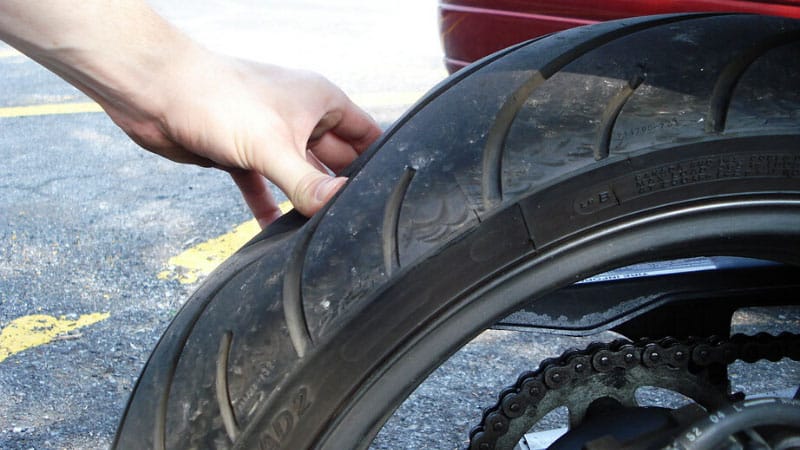 For this, you have to register a complaint at the police station and file a complaint. Only with this record will you be able to file a claim.
For this, you have to register a complaint at the police station and file a complaint. Only with this record will you be able to file a claim.
You can fix a slashed tire at home as long as the slash isn’t too large and your tire has been slashed on the tire tread. If the slash is on the tire’s sidewall, you’ll have to replace it.
Whether you’re getting ready for your morning commute or simply going for a drive, discovering your car has a slashed tire can ruin your day. Slashed tires make it impossible to use your car until you either replace it or try to repair the slash.
Figuring out whether you can fix your slashed tire at home can be daunting. That’s why
car insurance
comparison app
Jerry
has created a complete guide covering everything you need to know about how to fix a slashed tire. Read more to figure out whether your tire is fixable, how to repair your slashed tire at home, and how to save on insurance with our
trusted quote comparison app
.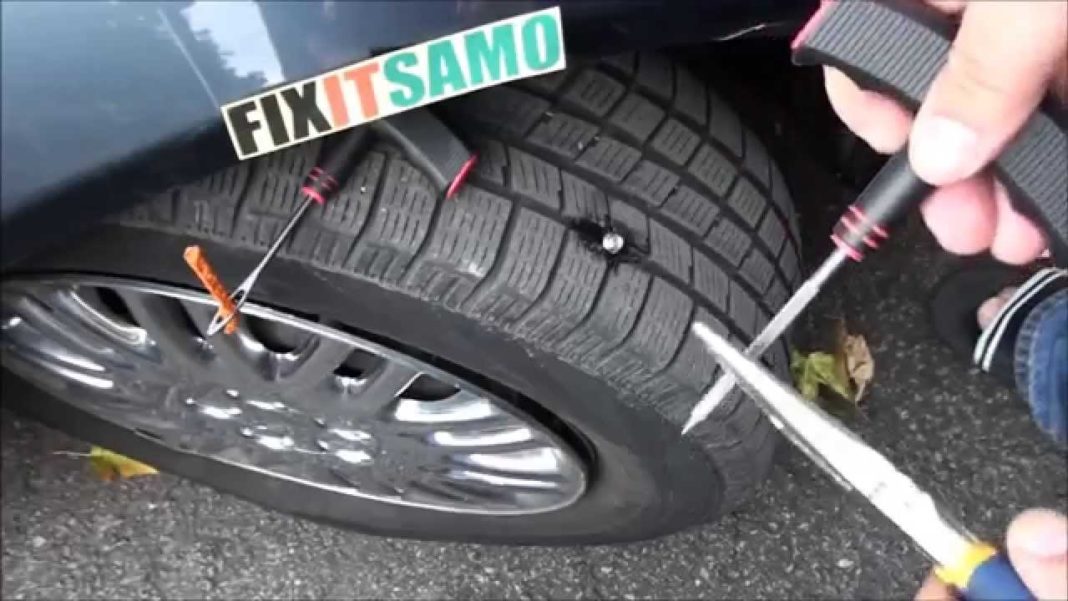
No spam · No long forms · No fees
Find insurance savings (100% Free)
Can you fix a slashed tire?
While it’s possible to repair slashed tires, sometimes the damage is too extensive to fix. Here’s how to know if you’ll need to replace your tire instead of repairing it.
The slash is on the sidewall: You can only repair a tire slash if the slash is on the tread. If it's on the sidewall instead, it’s best to replace your tire instead of repairing it.
The slash is very large: If the tire slash is longer than a fourth of the tire’s diameter, the slash is too large to repair.
There are multiple slashes: If the tire has more than one significant slash, you’re better off replacing the tire. Repairing the damage will take longer, and there’s a greater risk of more damage done to the tire.
What you’ll need to repair your tire
If your tire slash is on the tread and it’s not too large, you’re ready to begin repairing it. Here’s what you’ll need to fix your slashed tire:
Here’s what you’ll need to fix your slashed tire:
How to repair your slashed tire
There are two different methods for repairing a slashed tire. Which one you use depends on whether you want a longer-term solution or a quick fix.
Method 1: Use sealant
This method uses tire sealant to fix your slashes tires and generally lasts longer than method 2. Here’s what you’ll need to do:
Lift your car with a jack so that the damaged tire is no longer on the ground. Make sure your hazard lights are on if you’re not in your driveway or a parking lot.
Read the sealant instructions and apply the directed amount onto your tire slash. Don’t use less than the recommended amount, as you’ll likely compromise the sealant’s efficacy.
Check your tire pressure and ensure the slashed tire’s pressure is balanced with your other tires and that it’s holding air. Beware that tire sealants can cause your Tire Pressure Monitoring System (TPMS) to malfunction, so you may not get an accurate read.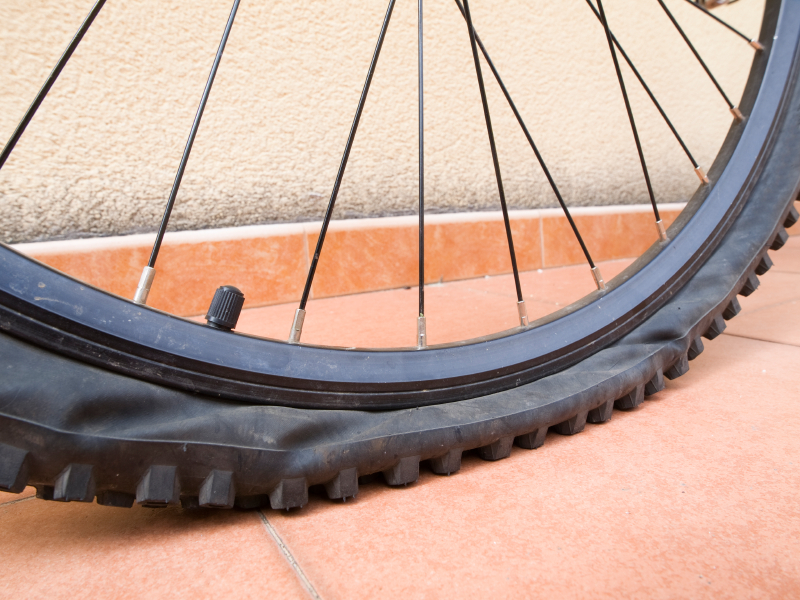
Method 2: Use a tire plug kit
This method doesn’t always last as long as tire sealant does, but it’s not as messy to apply, and a tire plug won’t cause your TPMS to malfunction. Here’s what you’ll need to do:
Lift your car with a jack so that the damaged tire is no longer on the ground. Make sure your hazard lights are on if you’re not in your driveway or a parking lot.
Use your lug wrench to remove the slashed tire from your car.
Carefully inspect the tire for the slash. If you can’t see it, listen for the hiss of escaping air.
Follow the tire plug kit instructions to plug the tire slash. Make sure you push the plug far into the tire so that very little of the plug sticks out.
Check your tire pressure and inflate your tire if you need to. Make sure that your damaged tire is holding air before driving your car!
While both of these methods will repair your slashed tire, neither is a permanent solution.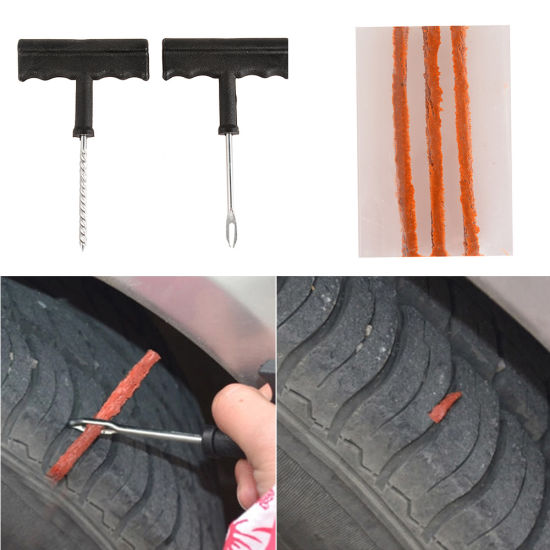 Eventually, your slashed tire will be ineffective, and you’ll need to replace it with a new tire.
Eventually, your slashed tire will be ineffective, and you’ll need to replace it with a new tire.
How to find the best car insurance
Keeping your tires in working order is an important part of staying safe on the roads, but the best way to keep you covered is by finding the right car insurance coverage.
Car insurance
broker app
Jerry
can help you find the best coverage while saving you hundreds of dollars!
It’s this simple: download the Jerry app or go to getjerry.com. In less than 45 seconds, Jerry collects all of your information from your existing insurer. Choose from competitive quotes from top insurance companies, and Jerry takes care of the rest—securing your new policy and helping you cancel your old one upon request.
No long forms. No calling around. No hard work. Just savings. The average Jerry user saves over $800 a year on car insurance.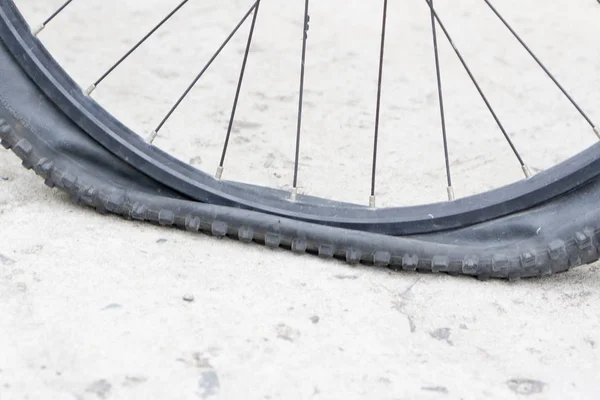
“
Jerry
is an amazing service with amazingly helpful representatives. I went from paying $700 every 6 months to paying $333 every 6 months with Progressive!” —Nate M.
RECOMMENDED
This app is great, but the customer service is even better! Not to mention convenient! My husband and I got the lowest rate (much lower than the rates I was finding online through my own searches), quickly, and pretty much all through text message! Thank you so much for a hassle free experience👍
Gabriella R.
Find insurance savings (100% Free)
4.7/5 Rating on App Store
FAQs
Another season of changing shoes is approaching. And you may remember that on one of the tires after the last winter/summer there is a jamb - a small bump. I don’t want to run to the store for the sake of one new tire. We understand. Or maybe it looks even better if repaired?
And you may remember that on one of the tires after the last winter/summer there is a jamb - a small bump. I don’t want to run to the store for the sake of one new tire. We understand. Or maybe it looks even better if repaired?
Yes, not every wheel that has met with a nail, rebar sticking out of the ground or a sharp stone on the road is considered damaged. Everything, of course, depends on the scale of the damage and its location on the tire itself. Some are easily repaired, while others are simply impossible to do - the tire can only be sent to the trash.
A bulge on a wheel, referred to by drivers as a bump or bulge, is the most common tire sidewall defect. It appears due to a collision with an obstacle or after falling into a pit, more often at high speed. The threads of the sidewall carcass are easily damaged by impact, and the tire at this point can no longer hold the load and air pressure - swelling appears. A small bump sooner or later turns into a big one, and driving with such a defect is dangerous - the wheel can shoot at any moment.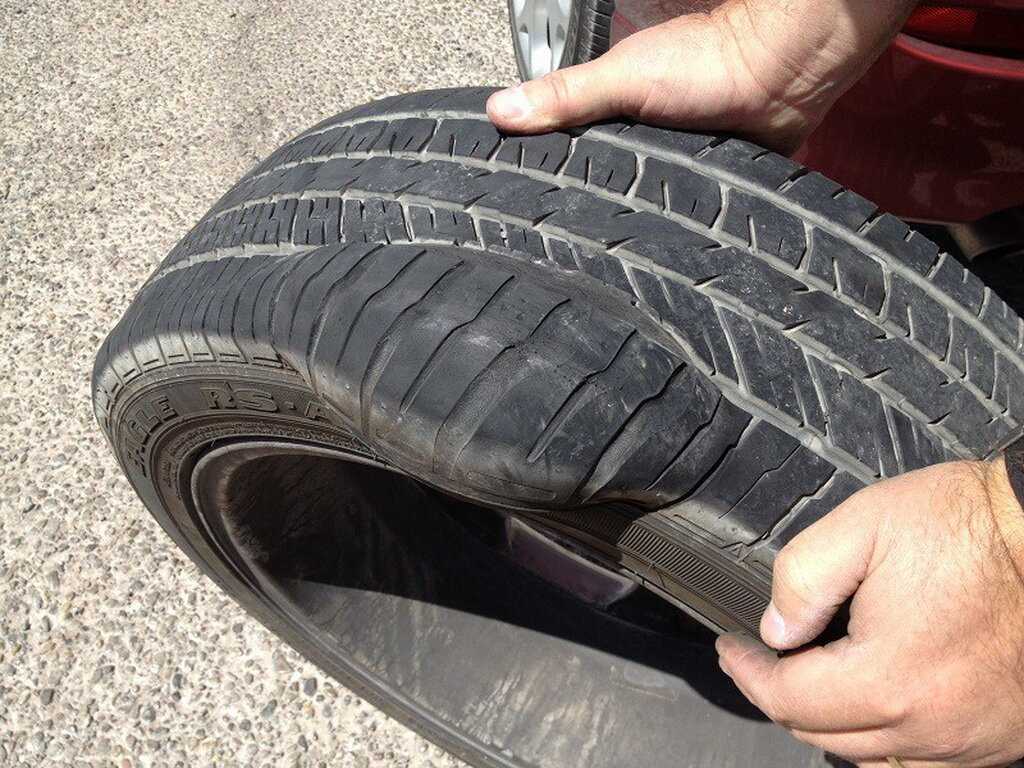 At high speed, this is fraught with loss of control, departure from the road and a rollover.
At high speed, this is fraught with loss of control, departure from the road and a rollover.
The quality of roads in Kazakhstan contributes to the appearance of bulges on tires
Some types of bulges are repairable, although this is a temporary measure. Not a single patch can restore the factory rigidity. Ideally, change the tire.
Special cord patches can extend the life of a tire with a herniation, even if the swelling has appeared on the tread. The sidewall is a different story. If the swelling appeared at a distance of more than 40 mm from the side, it can be repaired. If not, then the wheel needs to be replaced. Blisters on low profile tires are most often non-repairable.
For maximum safety when riding with a repaired bump, insert the tube. This is an inexpensive and reliable solution. On our market, you can find cameras made in China and Russia, the latter are slightly more expensive, but also of better quality.
The elimination of a side cut is a serious operation, therefore, as in the case of a bump, you will have to go to the professionals.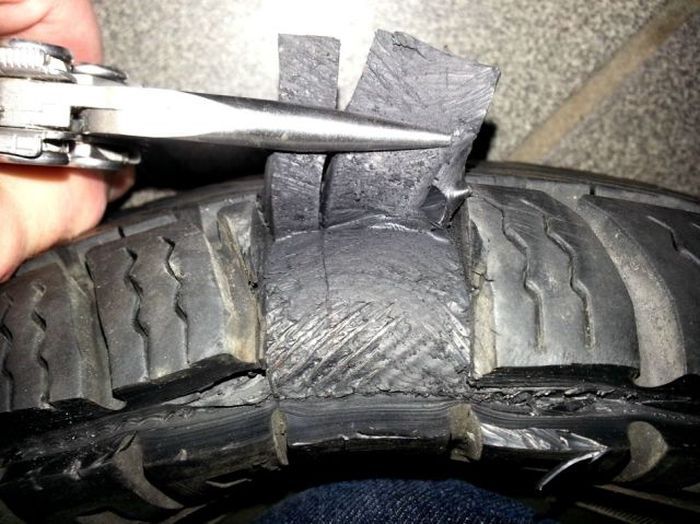 We need cord patches, fortunately in our time they are of different sizes and with a different number of layers. And if you do it wisely, then you can't do without special tools and vulcanization.
We need cord patches, fortunately in our time they are of different sizes and with a different number of layers. And if you do it wisely, then you can't do without special tools and vulcanization.
A cut, by the way, cannot be healed in all cases. If the gap is in the shoulder area of the tire, it is unlikely that anyone will undertake to repair it, since no guarantees can be given here. However, our Kulibins take on even the most difficult cases, cutting out parts of the sidewalls from the tires and even weaving the cord on their own.
Tire overhaul. We would not put such a wheel on ourselves
Low profile tires can be repaired, but more difficult. A tear in the sidewall is easier to seal on tires with a medium or high profile.
Sometimes a cut is confused with a pluck. This is when the outer layer of the sidewall caught on something sharp, a tear formed, but the frame itself remained intact. There is nothing wrong with that, although the drivers at the tire fitting company successfully repair the cut, for which they take it accordingly.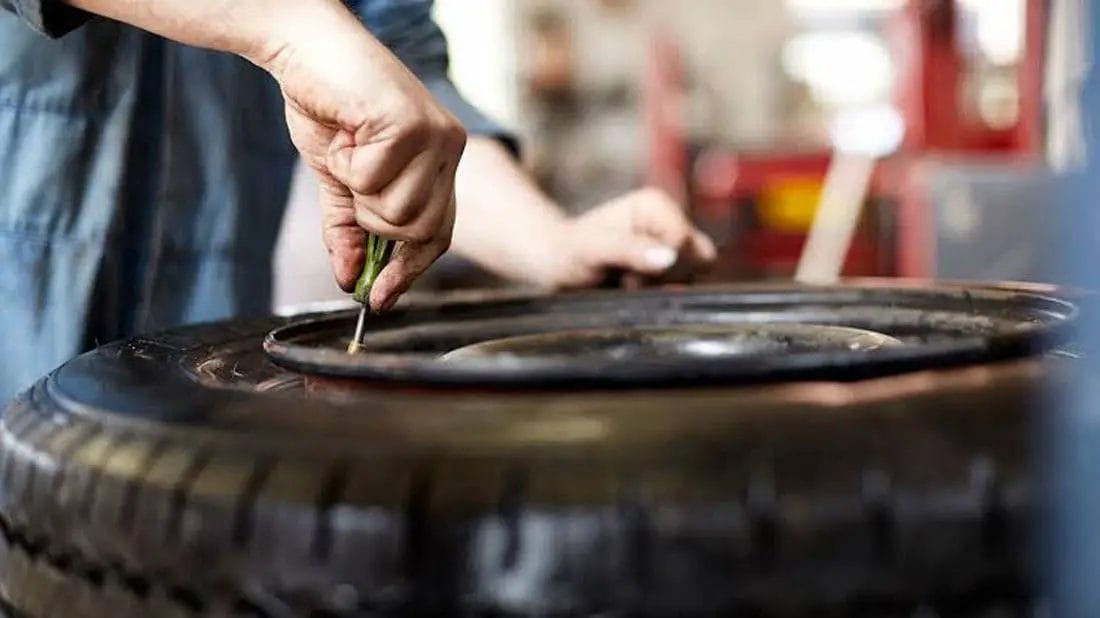
If a piece of rubber remains on the sidewall, then glue it with ordinary superglue (101st). If it came off, then it is better to cover it with raw rubber and vulcanize. Leaving the pluck bare is not recommended, because the tire carcass, often consisting of a metal cord, will quickly corrode.
In Europe, defective or used tires are perforated before being sent for scrap to prevent their resale and possible operation. But they don’t know that we have such holes on the sidewall patched once or twice
Cuts and hernias are not the only possible damage to the side of the tire. You can also spoil the side ring, in the process of changing shoes, for example. If it’s for garlic, then such a tire is already dangerous. Sooner or later, the tire pressure and the load in motion will start to squeeze the rubber off the rim - a wheel explosion can occur.
This ailment is repaired if the wire ring - the base - is intact. There are no special technologies and materials to correct this particular problem, but most often craftsmen use a two-component composition for chemical (also called cold) vulcanization. After mixing, the mass is pressed into a fat-free damage. Compound manufacturers recommend waiting 72 hours before mounting a tire. Of course, our masters do not pay attention to this condition - they put the tire right away. And it’s good if the wheel is flat because of this at night in the parking lot, and not on the road.
There are no special technologies and materials to correct this particular problem, but most often craftsmen use a two-component composition for chemical (also called cold) vulcanization. After mixing, the mass is pressed into a fat-free damage. Compound manufacturers recommend waiting 72 hours before mounting a tire. Of course, our masters do not pay attention to this condition - they put the tire right away. And it’s good if the wheel is flat because of this at night in the parking lot, and not on the road.
If the side ring tears are barely noticeable, but the wheel still deflates, then you can use a special liquid - a bead seal designed to seal a tubeless tire.
These seals have been used in motorsport for some time. In particular, in the American Formula D Drift Series, drivers used compounds to keep the tire on the rim even with minimal tire pressure. Now they are banned.
Pay attention to the left rear wheel of the Nissan Silvia S13. Due to too low pressure, it was literally taken off the disk under load
Every schoolchild has faced this problem when patching the inner tube of his bike after hitting something sharp.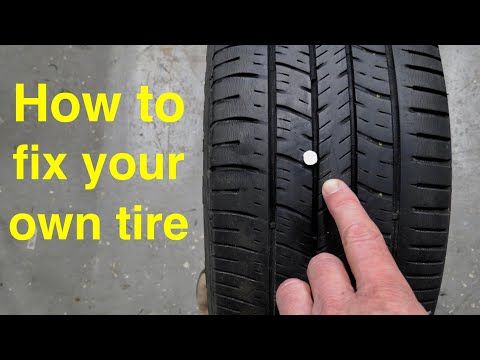 Repairing a car tire puncture with your own hands will also not be difficult even on the road. But for this you will need a pump (or compressor) and a universal tire repair kit with harnesses. All this is sold at any car market or gas station.
Repairing a car tire puncture with your own hands will also not be difficult even on the road. But for this you will need a pump (or compressor) and a universal tire repair kit with harnesses. All this is sold at any car market or gas station.
Repairing a tire on the side of the road with harnesses
The process is simple. If we are talking about the front wheels, then in most cases the wheel can not even be removed, it is enough to turn the steering wheel in the right direction, find the puncture site and carry out repairs. First, the hole is cleaned with a helical awl from the set. The tourniquet itself is smeared with glue and tucked into the eye of the awl, after which it is inserted into the tire hole. With a sharp movement, the tool is removed, and the tourniquet remains in place and clogs the hole. The tails are cut with a knife, but not at the root, it is recommended to leave about 20 mm. The tire is inflated and checked.
Sometimes a nail or self-tapping screw clogs the hole by itself, remaining in it.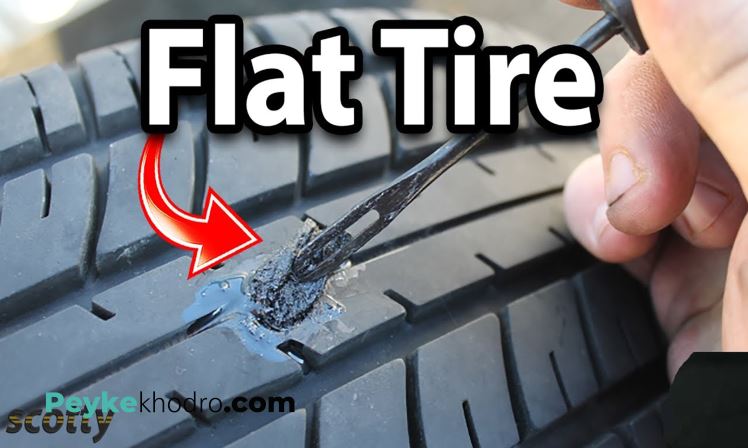 If you see a hat in a tread, do not rush to pull it out. While the pressure is holding, move to vulcanize. And sometimes they drive with a screw in a tire for weeks.
If you see a hat in a tread, do not rush to pull it out. While the pressure is holding, move to vulcanize. And sometimes they drive with a screw in a tire for weeks.
Repair of a puncture at a tire shop
Punctures are also repaired with harnesses at a specialized service, although among professionals such repairs are not considered long-term. After a few months, the flagella dry out and can let air through. There are more advanced methods like cold and hot vulcanization. The latter is more reliable. In this case, the hole is sealed with an elastic patch, and the funnel from a foreign object is filled with a special compound. After that, a vulcanizer is put on the tire, it heats up the rubber and solders it.
In addition to the plaster, the puncture is also repaired with special cord fungi. Craftsmen process the puncture site: drill it and treat the surface with a tool to roughen it. Then the repair area is lubricated with glue (it is also called cement) and a fungus is introduced.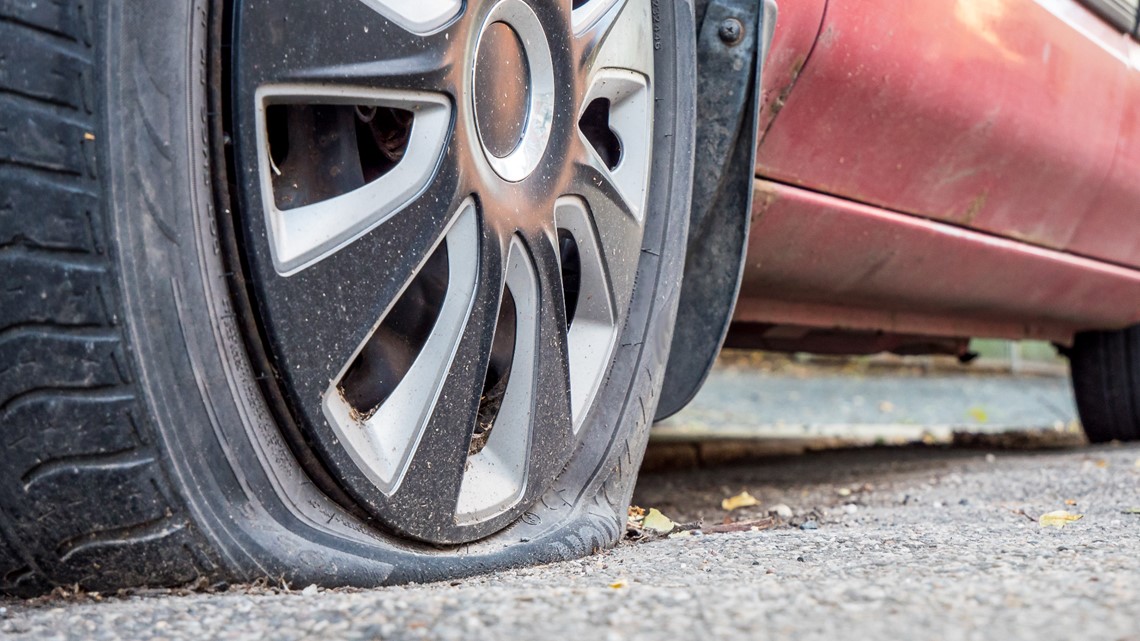 This is done from the inside of the tire. The cap of the fungus is rolled, and the excess legs are simply cut off from the outside.
This is done from the inside of the tire. The cap of the fungus is rolled, and the excess legs are simply cut off from the outside.
Puncture repair with sealant
With the advent of tubeless wheels, and later run flat tires, many automakers began to abandon spare wheels. Instead, repair kits with compressors are supplied with the machines. A repair kit is essentially a bottle of pressurized sealant. Later, such spray cans began to appear on the shelves of ordinary car dealerships.
This method has not taken root in the CIS, because the condition of the roads makes it necessary to have at least a stowaway in the kit, but it can also be considered as a method of repair on the road.
The car must be jacked up and sealant must be pumped into the damaged wheel through the nipple. Next, you should spin the wheel, then pump it up, lower the car and drive a few hundred meters. If the tire tightness has not been restored, repeat the procedure.
If the tire tightness has not been restored, repeat the procedure.
For commercial vehicles, cutting the tread with a special device (regrower) is a common thing. Moreover, such tire retreading is provided by the factory (marked REGROOVABLE on the sidewall) to increase the service life. But there are entrepreneurs who undertake to deepen the grooves in tires for passenger cars. But they are not intended for such an operation. Often used tires for sale are “refreshed” in this way. Be careful!
What is the threat?
The worst option is that the retreaded tire will shoot out on the road, as the master can damage the undertread layer when deepening the grooves. Such a tire will not be able to hold pressure at some point. There will be a boom! At best, the tire will indeed last a little longer, but is the game worth the candle? We think it's not worth it.
How is cutting done?
A regrower is used to cut the tread. Roughly speaking, this is a large soldering iron with interchangeable tips of various shapes. It goes through rubber like a knife through butter.
Roughly speaking, this is a large soldering iron with interchangeable tips of various shapes. It goes through rubber like a knife through butter.
If the tire is for passenger cars, then it is worth taking on a regrower only in one case - when part of the tread pattern was welded with "new" rubber during repair. This is where threading comes in handy in order to restore the grooves and symmetry of the tread.
Vehicle operation is prohibited if:
- tires have a residual tread height of less than 1.6 mm;
- tires have punctures, cuts, ruptures that expose the cord, as well as delamination of the carcass, delamination of the tread and sidewall;
- tires in size or load capacity do not match the car model;
- tires of various sizes, designs (radial, diagonal, chamber, tubeless), models, with different tread patterns, winter and summer, studded and non-studded, new and restored, are installed on one axle of the car;
- Tires retreaded according to the second repair class are installed on the front axle.
What is a second class repair?
This is the case when the carcass of the tire is restored after serious damage. A side cut (or tear) is a serious damage to the tire carcass.
Photo: Mikhail Tereshchenko / TASS
adv.rbc.ru
See also
Nail, rebar or sharp stone - sometimes you can damage a tire almost from scratch. First of all, the scale of damage is important, and often rubber can still be repaired. Most often, motorists turn to tire shops for repairs in the middle of autumn or spring - just in the season of replacing summer tires with winter tires and vice versa. In order not to stand in lines, it is worth knowing exactly when to go to the tire shop and when to go to the store.
The most common "injury" to rubber is a puncture, and it can most often be repaired. Professionals in the nearest service will do it much faster, and your hands will remain clean. But if the puncture caught you in a deserted place, and there is a pump and a tire repair kit with harnesses in the trunk, you can patch up the tire yourself. Most often, when repairing the front tires, the wheel can not even be removed, it is enough to turn the steering wheel in the right direction and find the puncture site.
First, the hole is cleaned with a helical awl, the repair harness is smeared with glue and tucked into the eye of the awl, after which it is inserted into the tire hole. With a sharp movement, the tool is removed, and the tourniquet remains inside and securely clogs the hole. The tails are cut with a knife, but it is recommended to leave about 20 mm. After that, the tire can be inflated and the pressure checked.
Repair with tourniquets is not considered long-term, because after some time they dry out and begin to let air through.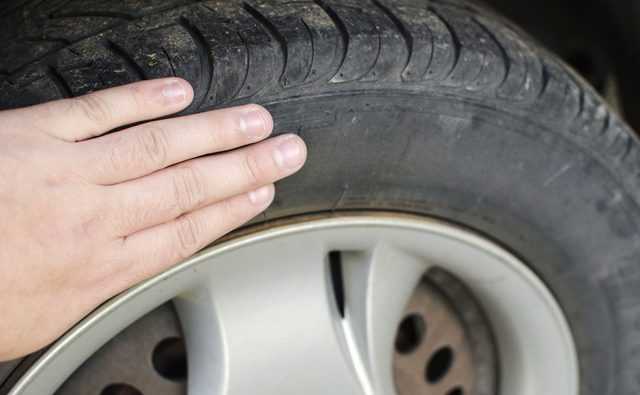 A more advanced puncture repair method is vulcanization. The hole is sealed with an elastic patch, and the funnel at the puncture site is filled with a special compound. A vulcanizer is put on top, which heats the patch and solders the excess.
A more advanced puncture repair method is vulcanization. The hole is sealed with an elastic patch, and the funnel at the puncture site is filled with a special compound. A vulcanizer is put on top, which heats the patch and solders the excess.
Under service conditions, the puncture is also repaired with cord fungus. The puncture site is processed and drilled to roughen. Everything is smeared with glue, after which a fungus is introduced from the inside of the tire, its cap is rolled, and the excess legs are cut off from the outside.
Photo: PA Images / TASS
A puncture can also be repaired with sealant. Many car manufacturers with run flat tubeless tires put compressor repair kits in the car instead of a spare tire - a bottle of pressurized sealant. The car is raised on a jack, after which the sealant is pumped into the damaged wheel through the nipple. Next, you need to spin the wheel and pump it up. After repair, the car should be driven a couple of hundred meters to check the tightness of the tire. If it has not recovered, the procedure is repeated.
If it has not recovered, the procedure is repeated.
It happens that a self-tapping screw or a nail closes the hole in the tire, remaining inside. Do not rush to pull it out - until the pressure drops, you can safely get to the service for vulcanization. Sometimes the wheel begins to blow off a few weeks after the self-tapping screw got into it. Therefore, it is better to check tire pressure periodically, and if the pressure sensor lights up, you should at least visually inspect the tire for a nail head.
A bump or bulge most often occurs on the side of a tire after hitting an obstacle or hitting a hole at speed. From the impact, the sidewall carcass threads are damaged, the tire ceases to hold the load and pressure, swelling appears. Any small bump eventually turns into a larger one, and with such a defect, the wheel can burst at any time. This is a direct safety hazard because a sudden flat tire can cause loss of control and a road accident.
Some bulges can be repaired, but no patch will ever restore a tire to factory stiffness. The ideal option in this case is to replace the tire. If a hernia has appeared on the tread, then you can extend the life of the tire with the help of cord patches - ready-to-use patches with an adhesive layer. But if swelling is found on the sidewall, the likelihood of repair is minimal, the wheel is easier to change. Blisters on low profile tires are generally not repairable.
The ideal option in this case is to replace the tire. If a hernia has appeared on the tread, then you can extend the life of the tire with the help of cord patches - ready-to-use patches with an adhesive layer. But if swelling is found on the sidewall, the likelihood of repair is minimal, the wheel is easier to change. Blisters on low profile tires are generally not repairable.
Only car service professionals can repair a side cut. Cord patches will be needed to repair the damage, but after some time the wheel will still have to be changed. This method will work only if the gap is not in the shoulder area of the tire, then no one will repair it.
In general, cuts or punctures, unlike punctures, are considered non-repairable, since the integrity of the frame is violated. And breakdowns do occur on the go, when the tire abruptly loses pressure and has time to make only a few turns “on the rims” before it comes to a complete stop. In this situation, the cord breaks and the layers of the tire are destroyed. Even if it is possible to close the hole, it is not recommended to use such a weakened tire.
Even if it is possible to close the hole, it is not recommended to use such a weakened tire.
Photo: Mikhail Pletsky / Russian Look
Cracks, sidewall abrasions and unprofessional tire fitting can also lead to tire problems. Cracks can occur as a result of improper storage of tires. Their danger is that moisture begins to flow to the cord, and this already renders the frame unusable. Air can also escape through cracks. Cracks cannot be repaired and tires will not last long. A tire with cracks is deformed, blistered, and may even break while driving.
Rubbing against curbs or driving on uneven roadsides can damage the tire sidewall. When driving like this, it is worth inspecting the tires for damage regularly. If a slight wear is found, the wheels can be swapped, which will slightly extend their service life and allow you to delay the purchase of new ones.
Improper fitting can damage the tire bead. In this case, the tire will lose its geometry and sit on a disc with a bevel, “eights” will be visible during rotation, and the driver will feel vibration while driving.